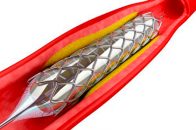Courtesy of the SBHCI. Chronic total occlusions represent around 18% of all coronary lesions. However, they account for just 5% of all interventions, which means that many patients only receive medical treatment. This prospective, open, multicenter study randomized patients with multivessel lesions in whom at least one of these was a chronic total occlusion. Patients…
Low Gradient Aortic Stenosis Won’t Improve with TAVR
Courtesy of Dr. Carlos Fava. It is known that patients with low gradient aortic stenosis show poor evolution with medical treatment and, in addition, present high mortality rate with surgery. As regards TAVR, a far simpler procedure compared to surgery, there is contradicting evidence; while some studies claim it holds comparable risks, others have found…
Amplatzer and Figulla Devices Prove to Be Safe for Percutaneous Patent Foramen Ovale Closure
Courtesy of Dr. José Álvarez. In patients with presumed paradoxical embolism through a patent foramen ovale (PFO) who are at high risk of recurrent thromboembolic events, percutaneous PFO closure is an alternative to pharmacological treatment. This closure has been shown to be safe and feasible with different devices including various technologies based on an umbrella,…
Nearly half of interventional cardiologists may have pre-cataract lesions
This statement is based on eye exams conducted during the last SCAI meeting (Society for Cardiovascular Angiography and Interventions), where 47% of evaluated operators had radiation related lesions in their crystalline. In time, these might turn into cataract. Studies on astronauts and Chernobyl survivors have shown a clear association between ionizing radiation and crystalline damage,…
PRISON IV: DES with resorbable polymer vs. DES with permanent polymer in total occlusions
Courtesy of SBHCI. The PRISON IV trial compared the sirolimus eluting stent with ultra-thin struts and biodegradable polymer vs. the second-generation everolimus-eluting stent with thin struts and durable polymer in successfully recanalized chronic total occlusions. This is a sub-study with optical coherence tomography (OCT). The study included 330 patients, 85% angiographically followed up at…
[SURTAVI] Sub-study of neurological events: more evidence in favor of TAVR
Courtesy of SBHCI. The occurrence of a periprocedural neurological events is associated to an increased risk of death and morbidity at long term, both for transcatheter aortic valve replacement (TAVR) and for surgery. The SURTAVI study, recently presented at the ACC meeting and simultaneously published by NEJM, showed that TAVR with self-expandable CoreValve or Evolut…
NOTION: TAVI with low risk at 4 year follow up
Courtesy of the SBHCI. There is little data about the use of transcatheter aortic valve replacement (TAVR) to treat patients with severe aortic stenosis at low surgical risk. Many of the questions involve long term duration of valves (over 10 years) when treating younger patients with longer life expectancy. The NOTION study aims at comparing…
VIVA Post-Market Study: More Evidence for the Valve-in-Valve Technique
Courtesy of the SBHCI. Bioprosthetic surgically-implanted valves degenerate over time, while patients become too old and are at high risk for reoperation. Transcatheter aortic valve implantation inside a deteriorated surgically-implanted valve (a valve-in-valve procedure) is an emerging alternative. The VIVA trial was designed to offer systematic and prospective data from patients treated with…
Mitral Valve Global Registry: transcatheter mitral valve replacement due to native valve disease
Courtesy of the SBHCI. The risk of surgical mitral valve replacement in patients with significant annular calcification is very high. There are isolated reports of transcatheter mitral valve replacement with balloon-expandable valve in this patient population. In consequence, this multicenter registry tries to concentrate information and analyzes the outcomes a year after the procedure. …
Leaders Free ACS: Good Results for the Polymer-Free Stent at 2 Years in ACS
Courtesy of the SBHCI. Guidelines recommend dual antiplatelet therapy for a year in patients admitted with coronary acute syndrome. However, patients at high risk for bleeding who receive coronary angioplasty have been historically excluded from studies. The new polymer-free stent BioFreedom allows for the reduction of dual antiplatelet therapy time, due to rapid drug elution…









